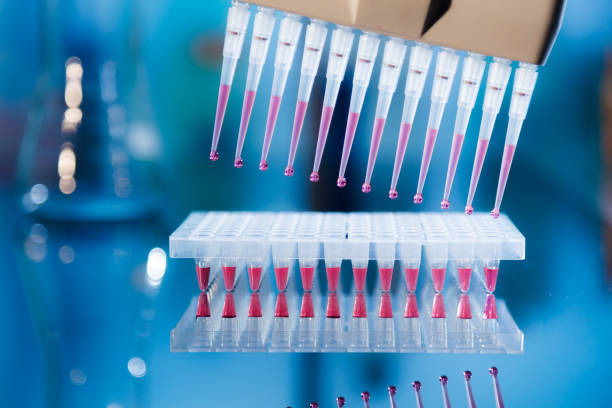
Polymerase Chain Reaction (PCR) Tests
Polymerase Chain Reaction (PCR) Tests for Racing Pigeons: A Game-Changer for Loft Health
In the world of pigeon racing, early disease detection is everything. Waiting for obvious symptoms can cost you valuable training time—or even an entire season. One of the most powerful tools in modern veterinary medicine is the Polymerase Chain Reaction (PCR) test.
PCR tests are revolutionizing how pigeon fanciers manage loft health, allowing early diagnosis of infections long before birds show signs of being sick. Let’s dive into why PCR testing matters, what it detects, and how it can protect your racing pigeons’ performance all year round.
What Is a PCR Test?
PCR (Polymerase Chain Reaction) is a highly sensitive method used to detect the presence of specific genetic material (DNA or RNA) from pathogens such as viruses, bacteria, or fungi.
Rather than waiting for the body to produce antibodies or for a disease to progress to visible stages, PCR identifies the pathogen itself—directly and accurately.
Key Advantage: PCR detects infections in their earliest stages, often before your pigeons even show symptoms.
Why PCR Testing Is a Must for Racing Pigeons
Racing pigeons are elite athletes. Minor illnesses can turn into major problems when birds are under stress from racing, breeding, or molting.
Here’s why PCR testing has become a must for serious fanciers:
-
Early Detection: Identify infections before they spread through the loft.
-
Targeted Treatment: Match medications to the specific pathogen (no more guesswork!).
-
Prevent Performance Drops: Address health issues early to maintain peak condition.
-
Improve Loft Health: Reduce chronic respiratory problems and hidden infections.
-
Save Money: Avoid unnecessary treatments and long recovery times.
Common Pathogens Detected by PCR in Racing Pigeons
PCR tests are used to detect several critical respiratory and systemic infections in pigeons:
| Pathogen | Disease | Why It Matters for Pigeons |
|---|---|---|
| Mycoplasma columbinasale | Chronic Respiratory Disease (CRD) | Causes coughing, rattling, sneezing, poor race returns. |
| Chlamydia psittaci | Ornithosis/Parrot Fever | Highly contagious; causes weight loss, respiratory signs. |
| Trichomonas gallinae | Canker (via crop swab PCR) | Impairs eating, breathing, and training performance. |
| Fungal species | Aspergillosis, Yeast Infections | Worsen in humid lofts; lead to chronic breathing issues. |
Many veterinary labs now offer combination panels that check for multiple pathogens at once—saving time and money.
How PCR Testing Works for Pigeons
-
Sample Collection:
A vet or trained handler collects samples such as crop swabs, choanal swabs (throat area), or fecal material, depending on the suspected illness. -
Laboratory Analysis:
The samples are sent to a specialized veterinary lab. Using PCR technology, the lab amplifies any genetic material from pathogens to detectable levels. -
Results:
Results are usually available within a few days. They will tell you exactly what infections—if any—are present. -
Action Plan:
Based on the results, you and your avian vet can create a targeted treatment plan to eliminate the infection efficiently.
When Should You PCR Test Your Racing Pigeons?
You don’t have to wait until disaster strikes to use PCR testing. Smart fanciers use PCR proactively:
-
Pre-Season Testing: Before training starts, screen your birds for hidden respiratory infections.
-
New Bird Quarantine: PCR test all new birds before introducing them into your loft.
-
Chronic Loft Problems: If your loft struggles with ongoing mild respiratory issues, test to find the root cause.
-
Post-Treatment Confirmation: After treating a known infection, use PCR to ensure the pathogen is completely cleared.
-
During Breeding Season: Protect your breeders and squabs by testing for common pathogens early.
PCR Testing vs. Traditional Diagnostic Methods
| Aspect | PCR Testing | Traditional Methods |
|---|---|---|
| Speed | Fast—results in days | Slow—may take weeks |
| Sensitivity | Very high (detects small amounts) | Lower (needs visible symptoms) |
| Specificity | Extremely specific to pathogens | May confuse similar infections |
| Cost | Moderate ($50–$150) | Variable (may require multiple tests) |
| Best Use | Early detection, asymptomatic birds | Confirming advanced disease |
Clearly, PCR is a smarter investment for lofts aiming for championship-level health and performance.
How to Prepare Your Loft for PCR Testing
Getting accurate PCR results depends on careful sampling and clean conditions. Here are some simple steps:
-
Avoid cross-contamination: Always use new gloves, swabs, and clean carriers when handling birds.
-
Sample the right birds: If testing a group, select birds that may be underperforming or showing subtle signs.
-
Provide complete history: Tell your vet or lab about recent symptoms, medications, or stress factors.
-
Follow transport instructions: Some samples need refrigeration or special handling to remain viable.
Boosting Loft Health After PCR Testing
Even if your PCR results are negative, there are still critical steps to maintain a healthy, high-performance loft:
-
Ventilation: Ensure your loft has good airflow to reduce respiratory stress.
-
Loft Hygiene: Clean perches, feeders, drinkers, and nest boxes weekly.
-
Vaccination: Keep up to date with vaccines appropriate for your region.
-
Targeted Supplementation: Use immune-boosting supplements with vitamins, minerals, and probiotics.
-
Quarantine New Birds: Always isolate and test newcomers before allowing loft access.
PCR Testing Checklist for Racing Pigeons
Use this quick checklist to make sure your birds are race-ready and your loft stays healthy all season!
1. When to Test
-
Pre-Season Health Screening (before training starts)
-
Before Introducing New Birds (during quarantine period)
-
If Loft Shows Respiratory Symptoms (coughing, sneezing, poor returns)
-
Post-Treatment Verification (confirm infection is cleared)
-
Before Breeding Season (protect breeding pairs and squabs)
2. What to Test For
-
Mycoplasma columbinasale (Chronic Respiratory Disease)
-
Chlamydia psittaci (Ornithosis / Parrot Fever)
-
Trichomonas gallinae (Canker; via crop swab)
-
Fungal Pathogens (Aspergillosis risk in humid lofts)
-
Antibiotic Sensitivity Test (if a pathogen is found)
3. Preparing for Sampling
-
Select target birds (underperformers, new arrivals, breeders)
-
Use clean gloves and sterile swabs
-
Label samples correctly (bird ID, date, type of sample)
-
Keep samples cool (follow lab instructions)
4. After Testing
-
Review Results Carefully (work with an avian vet if needed)
-
Apply Targeted Treatment (based on pathogen identified)
-
Boost Immunity (with proper nutrition and supplements)
-
Clean and Disinfect Loft Thoroughly
-
Retest If Necessary (to confirm clearance)
5. Pro Tips
* Always quarantine new birds and PCR test before mixing them into your loft.
* Perform yearly pre-season PCR testing to catch hidden infections early.
* Don’t treat blindly—test first for precise, effective medication!
Remember: an ounce of prevention is worth a pound of cure, especially when it comes to the respiratory health of racing pigeons.
Final Thoughts: PCR Testing Is an Investment in Winning
Healthy lungs, strong immune systems, and early treatment mean faster race returns and better loft performance. PCR testing is no longer a luxury—it’s an essential part of serious pigeon management.
By incorporating regular PCR testing into your racing program, you can spot hidden threats, fine-tune your treatments, and give your birds the best shot at victory.
Healthy Pigeons = Faster Race Returns!
Stay proactive. Stay ahead. PCR test your pigeons—and race to win!


